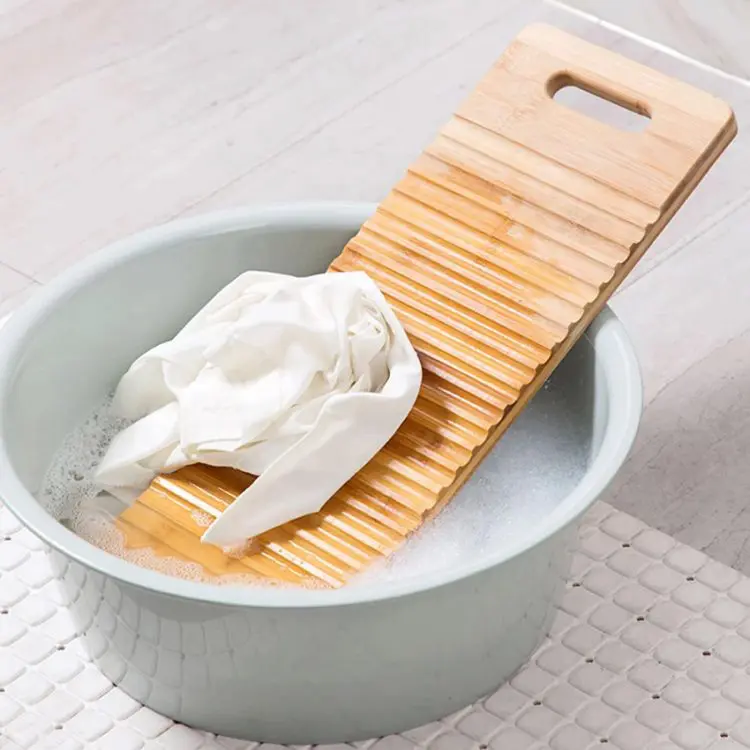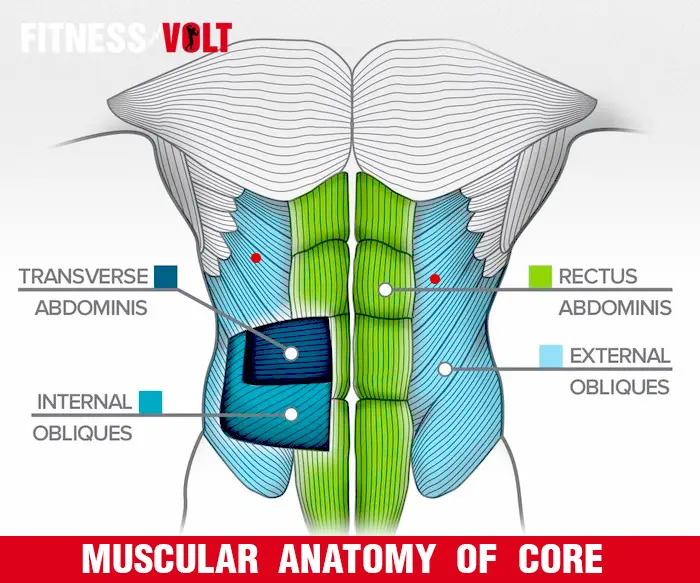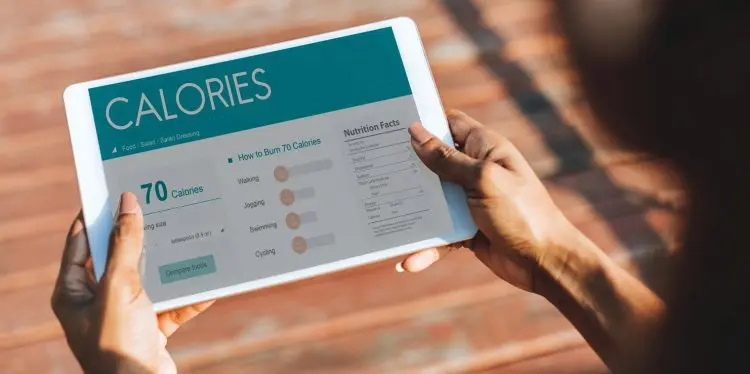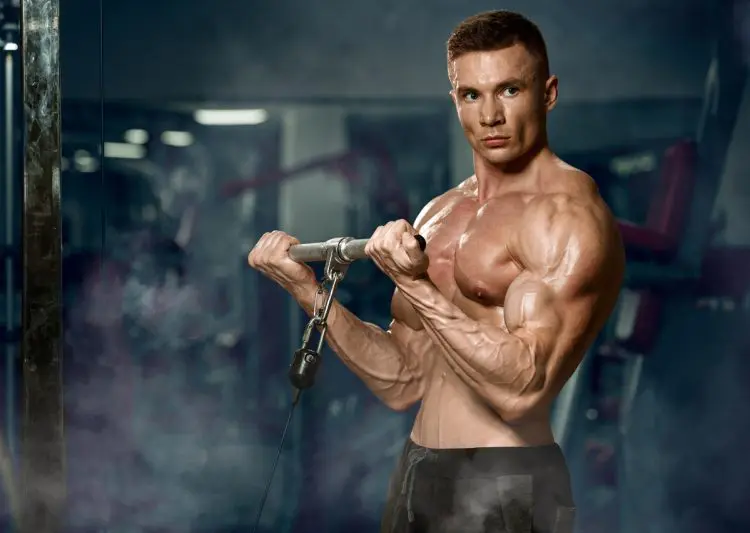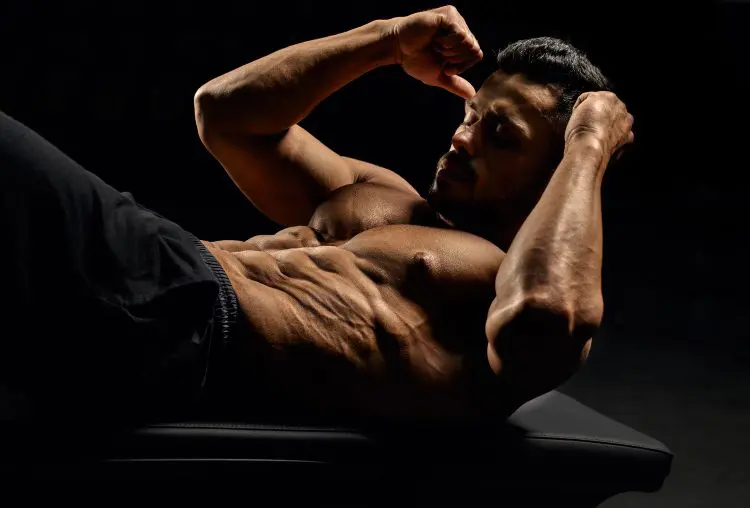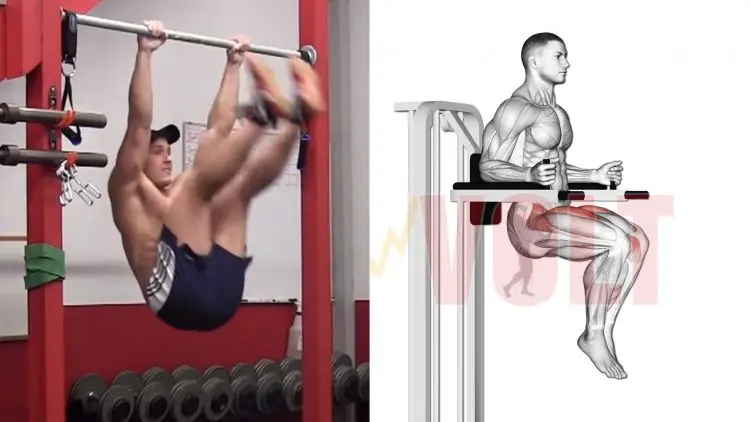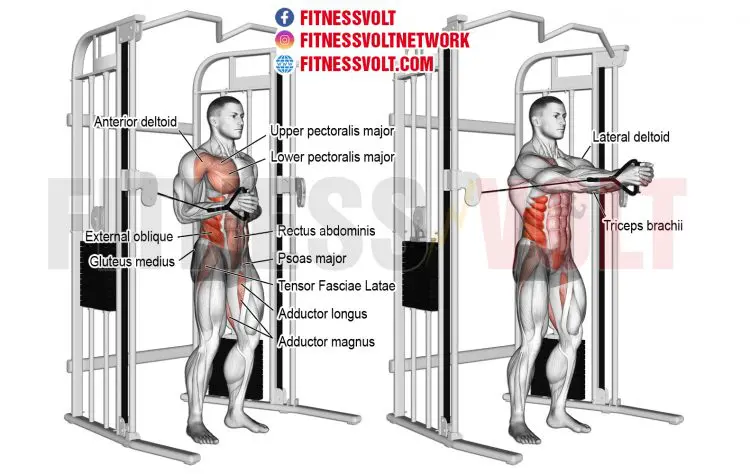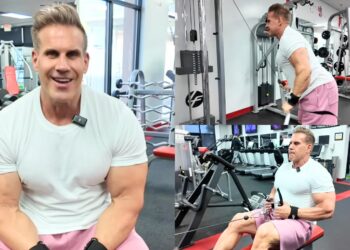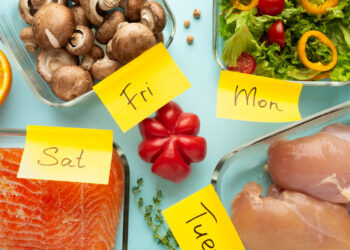Washboards are a thing of the past; your great grandparents might have used one to wash their clothes, and they were used as musical instruments too. But, nowadays, the only place you are likely to see an actual washboard is in a museum.
Despite being a word from he past, the term washboard is often used in connection with a well-developed midsection. The idea is that if the contours of your abs are deep enough that you could use them to wash your clothes.
While you probably won’t want to do your laundry on your rock-hard stomach, for a lot of exercisers, a well-defined six-pack is an important training goal. In this article, we’re going to reveal what you need to do to build the washboard abs women and men dream of.
What are Washboard Abs?
While you don’t NEED to know the muscles that make up your midsection, a basic knowledge of its anatomy and physiology can be helpful. If nothing else, it will help illustrate that getting a washboard stomach means that you need to do more than just crunches!
The main muscles that you need to work on to carve a washboard midsection are:
Level Up Your Fitness: Join our 💪 strong community in Fitness Volt Newsletter. Get daily inspiration, expert-backed workouts, nutrition tips, the latest in strength sports, and the support you need to reach your goals. Subscribe for free!
Rectus abdominis
The rectus abdominis is the long, flat muscle on the front of your abdomen. It’s separated by lines of ligamentous tissue, which gives it a washboard appearance. However, it’s important to note that this shape is only visible if body fat levels are low enough. How low depends on gender and genetics, but 10% is typical for men and 15% for women.
The main functions of the rectus abdominis are:
- Spinal flexion – bending your spine forward
- Lateral flexion – bending your spine to the side
- Compression of the abdominal contents – such as when you cough or exhale
Obliques
The obliques are located on the side of your abdomen. There are external oblique muscles and internal oblique muscles, but because they work together, most people refer to them as one muscle, simply calling them the obliques.
The main functions of the obliques are:
- Spinal rotation – twisting your spine
- Lateral flexion – bending your spine to the side
- Compression of the abdominal contents – such as when you cough or exhale
Transverse abdominis
Where the rectus abdominis runs vertically up the front of your abdomen, the transverse abdominis runs horizontally. Acting a lot like a weightlifting belt, your transverse abdominis encircles your abdominal contents and, when it contracts, helps increase intra-abdominal pressure to support and stabilize your spine.
While you can’t see the transverse abdominis, no matter how lean you get, it is still a critical muscle. It is directly involved in every abs exercise you do, especially those that involve bracing your midsection, i.e., planks.
The main functions of the transverse abdominis are:
- Compression of the abdominal contents – such as when you cough or exhale
- Stabilizing the lumbar spine and pelvis during movement of the lower and upper limbs
Nutrition for Washboard Abs
If you already train your abs regularly, there is a very good chance that you already have washboard abs; it’s just that they’re hiding under a layer of fat. Doing more abs training won’t help reveal your washboard. Instead, you need to strip that excess fat away, and that means eating less.
Fat is stored energy. Let’s say you need to consume 2500 calories a day to maintain your weight, but you eat 2800 calories per day instead. This produces a 300 calorie per day surplus. Your body will take these unused calories and turn them into fat, storing them for later.
Gradually, over many weeks and months, your body fat levels increase until your abs are completely buried under a layer of adipose tissue.
To get rid of this fat, you need to create a calorie deficit. For example, if you need 2500 calories to maintain your current weight, you would eat 2000 per day instead. This will force your body to use stored fat to make up this energy shortfall.
Exercise will help increase your calorie deficit, but the easiest way to make your body burn more stored fat is by eating a little less.
While you COULD follow a diet, such as paleo, keto, or intermittent fasting, you don’t have to. Instead, use a food tracking app and simply eat a little less. Skip some snacks, switch to skimmed dairy, cut down on sugar, or eat slightly smaller meals.
Using a total daily energy expenditure (TDEE) calculator, work out how many calories you need to eat to maintain your current weight, and then eat 300-500 less per day. It will take time, but gradually your body fat levels will decrease, which will make your washboard abs more visible.
Related: The Top 20 Weight Loss Tips and How to Lose Weight Without Dieting – And Keep it Off
Training Guidelines for Washboard Abs
The bigger a muscle is, the more prominent it will be. For example, if you’ve got big biceps and triceps, your arms will be more visible even if you’re wearing a T-shirt. It’s no different with your abs.
If you want a washboard stomach, you need to train your abs for size and strength. High rep endurance training is not the best option. After all, you wouldn’t do sets of 50 reps for your biceps, so don’t train your abs like that, either.
To sculpt the perfect washboard abs, focus on sets of 6-20 reps. If you can do more than 20 reps, look for ways to make your chosen exercises harder, and don’t just do more reps. Weighted abs exercises like cable crunches and dumbbell side bends are especially useful as it’s much easier to increase their intensity. In contrast, most bodyweight exercises are less modifiable, and the only way to make them harder is by cranking out more reps.
You also need to take a multi-directional approach to build the perfect washboard abs; you can’t just focus on the rectus abdominus. Instead, you must hit your midsection from all angles, leaving no developmental stone unturned.
Level Up Your Fitness: Join our 💪 strong community in Fitness Volt Newsletter. Get daily inspiration, expert-backed workouts, nutrition tips, the latest in strength sports, and the support you need to reach your goals. Subscribe for free!
The means your abs workout must include:
- Flexion (1) – focusing on the upper part of your spine
- Flexion (2) – focusing on the lower part of your spine
- Lateral flexion – bending sideways
- Rotation – twisting
- Bracing – stabilizing your spine
- Extension – bending backward
While extension isn’t crucial for developing your abs, it’s still important. If the muscles on the front of your midsection are stronger than those on the back, an imbalance will develop. This could lead to back injury and pain, not to mention poor posture. If your lower back is rounded, your abs will bulge outward, undoing your hard work to sculpt impressive washboard abs.
Regarding washboard abs training frequency, resist the temptation to train your abs every day. You wouldn’t work your legs or shoulders every day, so don’t overtrain your abs either. Instead, hit your abs hard 2-3 times per week on non-consecutive days. That will give them the time they need to recover and grow.
What About Cardio?
Cardio won’t directly sculpt the midsection of your dreams but could help you lose the fat currently covering your abs. After all, cardio burns calories, and if you are operating with a calorie deficit, some of your workout energy will come from stored fat.
However, while it’s okay to USE cardio for fat loss, you should take care not to ABUSE it. Doing too much cardio could lead to muscle atrophy, resulting in a slower metabolism and a less impressive physique. You could even end up being skinny fat.
If you decide to burn fat and calories with cardio, stick to short, intense workouts such as interval training and Tabatas. These workouts burn fat AND preserve muscle mass, so you’ll reach your training goals sooner.
Washboard Abs Workout
Armed with the training guidelines above, you should have no problem putting a washboard abs workout together. Just chose one exercise each for each of the six movement categories and focus on making your workout harder by increasing the workload whenever you can do more than 20 reps per set.
Or, you could follow our tried and tested workout instead!
Do these exercises 2-3 times per week on non-consecutive days, e.g., Monday and Thursday, or Monday, Wednesday, and Friday. Spend a few minutes warming up before you work out to ensure your muscles and joints are ready for what you are about to do. A few minutes of easy cardio and some joint mobility and dynamic flexibility exercises will suffice.
| Exercise | Sets | Reps | Recovery | |
| 1 | Kneeling cable crunches | 2-4 | 6-20 | 60-90 seconds |
| 2 | Hanging knee raises | 2-4 | 6-20 | 60-90 seconds |
| 3 | Saxon side bends | 2-4 | 6-20 per side | 60-90 seconds |
| 4 | Pallof press | 2-4 | 6-20 per side | 60-90 seconds |
| 5 | Rollouts | 2-4 | 6-20 | 60-90 seconds |
| 6 | 45-degree back extensions | 2-4 | 6-20 | 60-90 seconds |
Exercise Descriptions
There are two ways to do any exercise – the right way and the wrong way. The right way is safe and keeps the tension on the muscles you’re trying to work. The wrong way increases your risk of injury and makes your workout less effective. Make sure you always use the right way!
1. Kneeling cable crunches
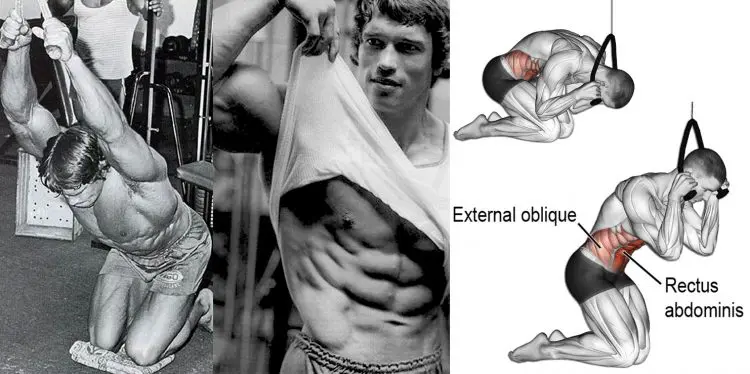
Kneeling cable crunches are an excellent rectus abdominis exercise. Unlike bodyweight crunches, you can make them more challenging as you get stronger. Using a cable also keeps your abs under constant tension. Go slow and focus on really squeezing your abs at the bottom of each rep.
Learn how to do cable crunches in our detailed guide.
2. Hanging leg raises
Your second spinal flexion exercise is hanging leg raises. Done properly, hanging leg raises involve flexing your lower spine. There are lots of different ways to do hanging leg raises, including using a chin-up bar or captain’s chair, weighted and unweighted, and keeping your legs straight or bending your knees. Use the option that works best for you and that keeps you in the prescribed 6-20 rep range.
Read more about hanging leg raises here.
3. Saxon side bends
Saxon side bends are named after old-school strongman Arthur Saxon. It is a lateral flexion exercise that works your abs and obliques at the same time. This is a challenging move, so don’t go too heavy too soon.
How to do it:
- Press and hold a weight overhead. You can use a single or pair of dumbbells, a kettlebell, medicine ball, or barbell. Stand with your feet about shoulder-width apart, knees slightly bent. Brace your abs.
- Lean over to the left as far as you can and then lean to the right. Do not twist your hips or shoulders.
- Continue alternating sides for the prescribed number of reps.
4. Pallof press
Named after physical therapist John Pallof, the Paloff press is an anti-rotation exercise that mainly targets your obliques and, to a lesser degree, also works your transverse abdominis and rectus abdominis. Because it’s a cable exercise, you can adjust the weight to ensure that you provide your midsection with plenty of washboard-sculpting overload.
Find out how to do the Paloff press here.
5. Rollouts
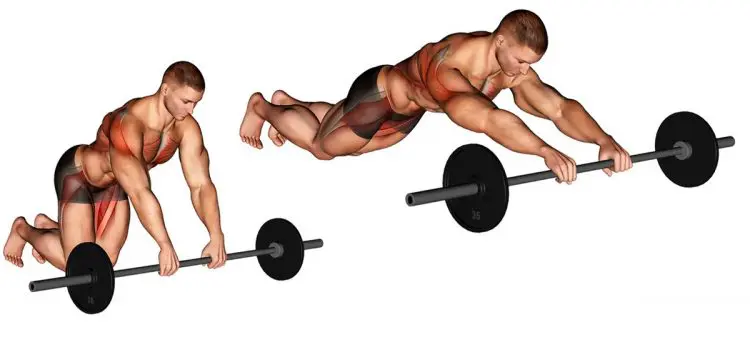
Rollouts are a sort of moving plank. They are an anti-extension exercise because the main job of your abs is to prevent your lumbar spine from hyperextending or arching. Use a barbell so that you can increase the load on your abs as you get stronger.
Learn how to do rollouts in our detailed guide, including some awesome variations and alternatives.
6. 45-degree back extensions
Balance all that anterior abs training with a few sets of 45-degree back extensions. As well as working your lower back, this exercise trains your glutes and hamstrings too. You can do 45-degree back extensions with or without weight according to your current level of strength.
Find out how to do 45-degree back extensions and alternatives you can use instead in this in-depth article.
Wrapping Up
Not everyone is destined to develop washboard abs. Sadly, genetics play as big a part as training and nutrition. However, if you step up and start taking your diet and core training seriously, you are much more likely to develop the midsection of your dreams.
Even if you don’t reach washboard nirvana, you’ll still sculpt abs to be proud of, and a more muscular midsection will improve your sports and gym performance and could even reduce your chances of back pain.

